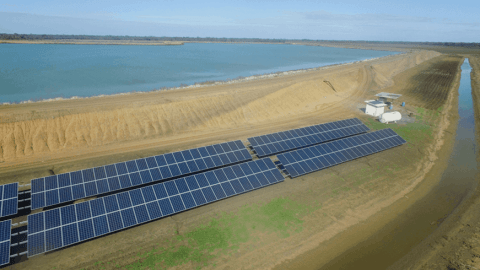By Troy Leyden, Operations Engineer, Fitzroy River Water (a business unit of Rockhampton Regional Council)
Variable Speed Drives (VSD), also known as variable voltage variable frequency drives or pulse width modulation, are commonplace in water pump stations where they allow reliable pressure or flow regulation and substantial energy savings simultaneously. In sewage pump stations, the use of VSDs is less widespread, but through the use of daily cleaning cycles, high torque settings and reverse-run subroutines, the major obstacles to widespread acceptance are being overcome.
Identifying the need to use the reverse-run feature is typically triggered by vibration sensors on the pump, an operator identifying a decrease in pump performance manually by reviewing trends, or a pre-set minimum flow rate being exceeded.
Often, these strategies lead to long periods of sub-optimal performance or the inability to utilise the range of speeds and associated energy savings otherwise available.
Developing a flow prediction tool
As part of a recent upgrade of a Sewage Pump Station (SPS) by Fitzroy River Water (FRW), an algorithm was developed as a flow prediction tool.
The tool uses the pump speed and well level to predict the expected flow rate of the pump based on the pump characteristic curve, the system curve and the level sensor range.
The flow prediction tool is successfully being used to initiate the reverse run feature, and if the reverse-run feature is triggered three times in a 24 hour period the pump goes into an alarm state to alert the operator that maintenance intervention may be required.
The development of the flow prediction tool also had an additional benefit, the pump is controlled such that it changes speed as the well is emptied, keeping the pump operating at or near its Best Efficiency Point (BEP) throughout the cycle.
It is anticipated that by operating the pump in this manner it will maximise the life of the pump by minimising vibration. Of course this manner of operation is not possible at all sites, it is dependent on both the system and available pump characteristics. But for this site it was an option, and may influence future pump selection.
Flow prediction in action
The algorithm for predicting flow rate uses pump and system specific characteristics. Then there is a buffer zone to allow for transitional solids that only stay in the pump for a short period.
For most sites FRW currently uses ten per cent as the allowance for the actual to fall below the predicted flow before a reverse run is triggered.
This buffer is operator modifiable through the SCADA system, effectively allowing the flow prediction tool to be disabled if required, without the need for personnel to access the site. To determine the pump and system specific characteristics for the predicted flow to be determined the following process is followed.
Pump full speed characteristic curve expressed as:

System curve expressed as:

Unfortunately, some system curves change as they are used due to sections of the force/rising main draining between pump runs. This is unavoidable as the air valves are a necessary part of the network, and it makes the flow prediction tool less accurate. To compensate, a larger buffer zone is used to avoid nuisance triggers.
Expected flow at a given pump speed and well level can be found using:

For the recent SPS upgrade by FRW the range of normal operation is to start the pump at 75 per cent speed at 40 per cent well level and increase the speed as the well level falls linearly, such that the pump stop speed is 90 per cent at ten per cent well level. On the following graphs the orange points indicated the predicted flow rate as the speed and well level change.

Figure 1 – Range of Normal Operation
During rapid inflow such as an extreme wet weather event where the well level rises above the start level of 40 per cent, the pump speed increases linearly to 100 per cent speed by a well level of 60 per cent. However, the receiving network during such an event is expected to become overloaded if the pump were allowed to deliver its entire capacity.
So, there is a maximum flow rate programmed into the control system that overrides the speed control based on well level. Should any of the sensors fail the pump’s default speed is 80 per cent of nominal, which is stable for both the receiving network and pump for all well levels, and has no disadvantage in terms of maximum discharge flow rate achievable.
It may seem that the pump is oversized for the application, but full speed is utilised daily during the well cleaning cycle.

Figure 2 – Range of operation during extreme inflow event.
At the maximum allowable flow rate the downward surface velocity of the well is sufficient to effectively clean grit from the floor of the well even during periods of peak dry weather flow.

Figure 3 – Daily well clean cycle
This algorithm has been in use at one of FRW’s largest SPS since early 2021, and has proven to effectively detect partial blockages early. Moving forward, as the pumps require the impeller clearance adjusted, it will be noticed by the operators by the pump going into an alarm state, thereby avoiding unnecessary energy consumption.















